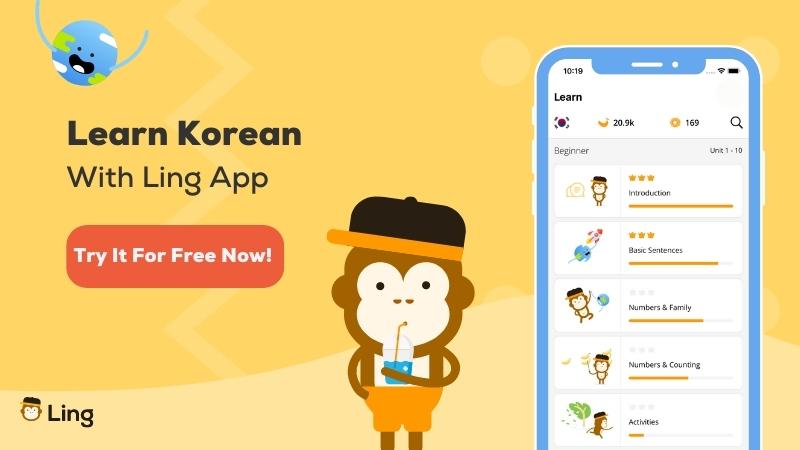As the world becomes increasingly connected through technology, communication has become a crucial aspect of our lives. Whether it’s for business or personal matters, email, which is 이메 (imeil) in Korean, has become the go-to mode of written communication. But as convenient as it may be, crafting the perfect email (formal/informal version) can be a daunting task, especially when dealing with different cultures and languages.
Enter Korean culture, where etiquette and respect reign supreme. In written communication, knowing the right phrases and expressions to use can make all the difference in how your message is received. That’s why we’re here to help you navigate the nuances of Korean email communication. In this blog post, we’ll be your guide as we explore some essential Korean email phrases that will elevate your communication game in both personal and professional contexts.
Whether you’re a beginner or an intermediate learner of the Korean language, these phrases will come in handy when you’re crafting your next email. So, get ready to impress your Korean counterparts with your newfound language skills and cultural know-how. Let’s dive in!
Step By Step Guide To Write Emails
Looking to write an email in Korean, but not sure where to start? No worries, we’ve got you covered with this step-by-step guide:
Step 1: Start With A Personal Greeting
Begin your email with a personal greeting that shows respect to the recipient. Use the recipient’s name and an appropriate honorific to address them. This small gesture can go a long way in establishing a positive and respectful relationship.
Step 2: Introduce Yourself
If you haven’t previously met the recipient, it’s helpful to introduce yourself briefly. Mention your name, your company or organization, and your role. This helps to establish your credibility and context for your message.
Step 3: State Your Purpose
Clearly state the reason why you’re sending the email. This could be a request, a question, an introduction, or an update, among others. Be concise and to the point in your explanation to ensure that your message is understood. Also, add any useful material as an attached file for formal emails.
Step 4: Provide Details
Provide all necessary details to support your purpose. Use simple language and avoid unnecessary jargon or technical terms that the recipient may not be familiar with. Make sure to include any relevant attachments or links as well.
Step 5: Use Polite Expressions
Use polite expressions and honorifics throughout the email to show respect and maintain a professional tone. This includes phrases such as “안녕하세요” (annyeonghaseyo) for greetings, “감사합니다” (gamsahamnida) for expressing thanks, and “죄송합니다” (joesonghamnida) for apologizing. These expressions help to establish a positive and respectful tone.
Step 6: End With A Closing Remark
End the email with a closing remark that shows appreciation or respect. Common closing remarks include “좋은 하루 보내세요” (joeun haru bonaeseyo), which means “Have a good day,” or “건강하세요” (geonganghaseyo), which means “Take care of your health.” This small gesture can leave a positive lasting impression.
Step 7: Sign Off
Sign off with a polite expression such as “최선을 다할게요” (choeseoneul dahalgeyo), which means “I’ll do my best,” followed by your name and job title. This helps to establish your identity and context for your message.
Step 8: Check For Errors
Before sending the email, proofread it to check for errors in grammar, spelling, or punctuation. This ensures that your message is clear and professional.
By following these simple steps, you can write a professional and respectful Korean email that effectively communicates your message. Happy emailing!
Importance Of Emails In Korean
In the fascinating world of Korean culture, writing emails is not merely a mundane task of typing words on a screen. Rather, it is a crucial aspect of professional communication that reflects the deeply ingrained Confucian values of respect, hierarchy, and social harmony.
When crafting an email in Korean, one must take great care to use formal language and honorifics, known as “jondaetmal,” to convey respect and show deference to the recipient’s position. This emphasis on the hierarchy is a fundamental value in Korean culture, where the seniority system is highly valued and strictly observed.
Furthermore, email etiquette in Korean culture goes beyond mere formality, requiring the inclusion of personal greetings and expressions of gratitude and humility. By adding phrases like “안녕하세요” (annyeonghaseyo) and “감사합니다” (gamsahamnida), one can convey not only respect but also establish a warm and friendly relationship with the recipient.
In Korean culture, punctuality is a virtue, and meeting deadlines is a must. Therefore, it is essential to ensure that all information in the email is correct and that the message is delivered promptly. Any delay or error can have serious consequences, leading to a loss of trust and even jeopardizing one’s job.
Writing emails in Korean culture is not a simple matter of exchanging information but a way of demonstrating respect, maintaining social harmony, and building professional relationships. Following the proper email etiquette, and using formal language and expressions is essential to navigating the intricacies of the Korean workplace and establishing successful relationships with colleagues, clients, and superiors.
Korean Email Phrases

Here are some Korean email phrases for you to craft new and beautiful emails in Korean.
Greeting/Opening
- Dear [Name], : 친애하는 [이름], ( chin-aehaneun [ileum], )
- Hello [Name], : 안녕하세요 [이름], ( annyeonghaseyo [ileum], )
- Hi [Name], : 안녕하세요 [이름], ( annyeonghaseyo [ileum], )
Introducing Yourself
- I am writing to introduce myself as… : 자기 소개를 하려고 글을 씁니다… ( jagi sogaeleul halyeogo geul-eul sseubnida… )
- Allow me to introduce myself: I am… : 제 소개를 하자면: 저는… ( je sogaeleul hajamyeon: jeoneun.. )
Asking For Information
- I was wondering if you could provide me with more information about… : 에 대한 자세한 정보를 제공할 수 있는지 궁금합니다… ( e daehan jasehan jeongboleul jegonghal su issneunji gung-geumhabnida… )
- Could you please let me know… : 알려주세요… ( allyeojuseyo… )
Requesting Action
- I would appreciate it if you could… : 해주시면 감사하겠습니다… ( haejusimyeon gamsahagessseubnida… )
- Could you please… : 제발… ( jebal… )
- I am kindly requesting that you… : 잘 부탁드립니다… ( jal butagdeulibnida… )
Offering Assistance
- Please let me know if there is anything I can do to help. : 도와드릴 수 있는 일이 있으면 알려주세요. ( dowadeulil su issneun il-i iss-eumyeon allyeojuseyo. )
- If you need any further assistance, please don’t hesitate to contact me. : 도움이 더 필요하시면 언제든지 저에게 연락해 주십시오. ( doum-i deo pil-yohasimyeon eonjedeunji jeoege yeonlaghae jusibsio. )
Apologizing
- I apologize for any inconvenience this may have caused. : 불편을 드려 죄송합니다. ( bulpyeon-eul deulyeo joesonghabnida. )
- I am sorry for any confusion. : 혼란을 드려 죄송합니다. ( honlan-eul deulyeo joesonghabnida. )
Closing
- Thank you for your time and consideration. : 당신의 시간과 배려에 감사드립니다. ( dangsin-ui sigangwa baelyeoe gamsadeulibnida. )
- I look forward to hearing from you soon. : I는 기대 심리가 곧 봐. ( Ineun gidae simliga god bwa. )
- Best regards, : 친애하는, ( chin-aehaneun, )
- Sincerely, : 감사합니다, ( gamsahabnida, )
- Thank you, : 감사합니다, ( gamsahabnida, )
Wrapping Up

If you’re interested in learning Korean, then Ling is the perfect platform for you! Our interactive lessons cover everything from basic Korean sentences and common phrases to more advanced language skills, all while immersing you in Korean culture. Our lessons crafted, with the help of experts, will guide you through every step of the learning process, from the very beginning to fluency.
By taking our courses, you’ll be able to communicate effectively in both formal (polite) and informal Korean emails, as well as in everyday life situations in South Korea. Plus, with our attached files, you’ll have all the resources you need to succeed. Don’t miss out on the opportunity to expand your horizons and connect with Korean speakers your age or older. Sign up for Ling today and start your journey toward mastering the Korean language!
Fast-track your learning by downloading Ling from Play Store or the App Store. Also, check out our posts on the Korean map and Korean hand gestures.
































































